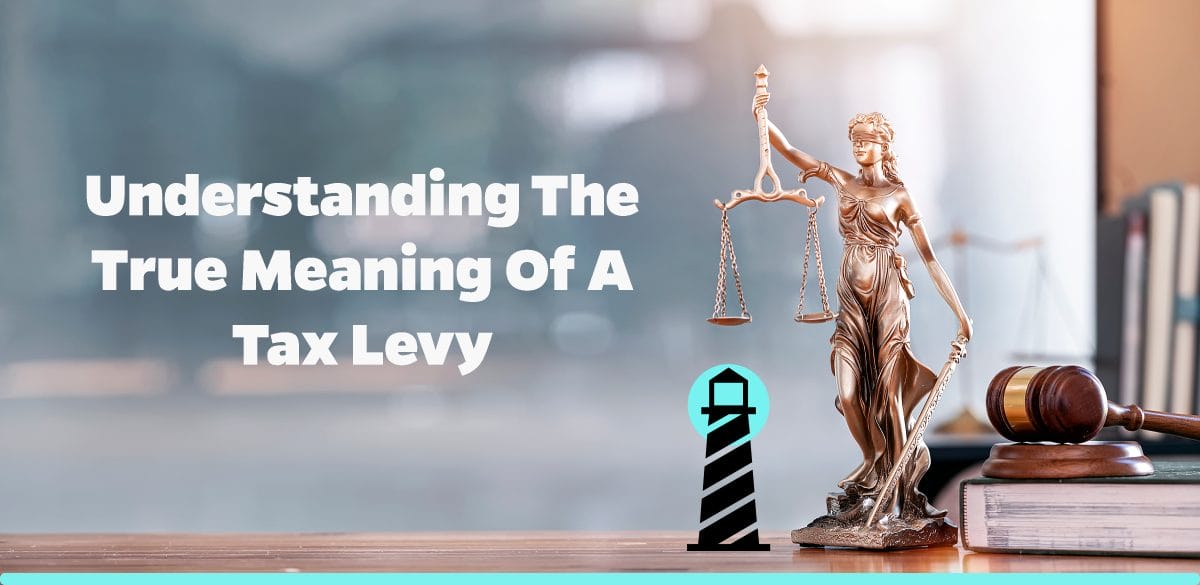Grasping the Concept of a Tax Levy
One of the stress-inducing challenges that taxpayers face is dealing with tax levies. This financial burden often brings confusion and misunderstanding. In light of this, we at Brightside Tax Relief sincerely believe that the more you know, the better you can navigate such situations. With knowledge as your defense, the concept of a tax levy doesn’t have to be so daunting. To aid in this journey, we have broken down the ‘Levy Meaning,’ its implications, types, and how to handle them.
Dissecting the Levy Meaning
To begin with, a levy, specifically a tax levy, is an authoritative seizure of property to satisfy a tax debt. When a taxpayer fails to pay owed taxes within a specified time, the IRS (Internal Revenue Service) can legally confiscate the taxpayer’s assets. This method is the last resort utilized by the IRS after several attempts to collect the outstanding taxes.
This situation can seem quite severe, but remember, the IRS gives plenty of notice before enforcing the levy. The reason for its finality is quite simple – if the IRS cannot collect the tax due voluntarily, it will proceed to do so involitably through the levy processes.
Common Types of Tax Levies
Understanding the types of tax levies will provide more clarity to the levy meaning. Here are the most common types:
- Bank Levy: With this type of levy, the IRS can seize the funds in a taxpayer’s bank account. The funds will be on hold for 21 days to allow for any dispute or payment plan arrangement, after which they are sent to the IRS.
- Property Seizure: Here the IRS seizes physical assets, which may include your house, cars, or valuables. These items are usually sold at an auction to recover the tax debt.
- Wage Garnishment: This process involves the IRS directly contacting your employer. A portion of your salary is then withheld to cover the tax debt until the tax, including interest and penalties, is fully paid.
Understanding the Tax Levy Process
The tax levy process is a multi-staged procedure by the IRS to recover owed taxes. The IRS sends several notices to the taxpayer, giving them ample opportunity to settle their debts or create a payment plan before resorting to a tax levy.
The IRS begins with a Tax Bill or Notice of Taxes Due, which clearly communicates the amount owed. If the taxpayer does not respond or comply, a Final Notice of Intent to Levy is sent. This last notice is sent 30 days before the actual levy begins, giving the taxpayer a final chance to settle their dues or negotiate a payment plan.
Navigating Tax Levies
Being faced with a tax levy can be a daunting and uncertain experience, but with the right information and approach, it can be effectively managed. If you find yourself in such a situation, it’s critical to approach it head-on. Consult with a tax professional for guidance, read up on available resources, and most importantly, communicate with the IRS.
Mostly, the IRS is open to forming payment plans or settling on an offer in compromise. Ignoring notifications from the IRS could only escalate the matter, leading to the imposition of a tax levy.
For additional information regarding tax levies, you’re welcome to visit the IRS page explaining the levy meaning.
A Look Forward
Being informed is the first step in tackling the challenge of understanding tax levies. As experts in tax relief, we at Brightside Tax Relief are committed to helping you understand the dynamics of tax dues, penalties, and the levy meaning.
We believe that taxpayers can better navigate the often complicated world of taxes with a clear understanding of the processes. Remember to consult a tax professional for personal tax queries and issues. Stay informed, stay compliant, and be ahead of your tax game.




